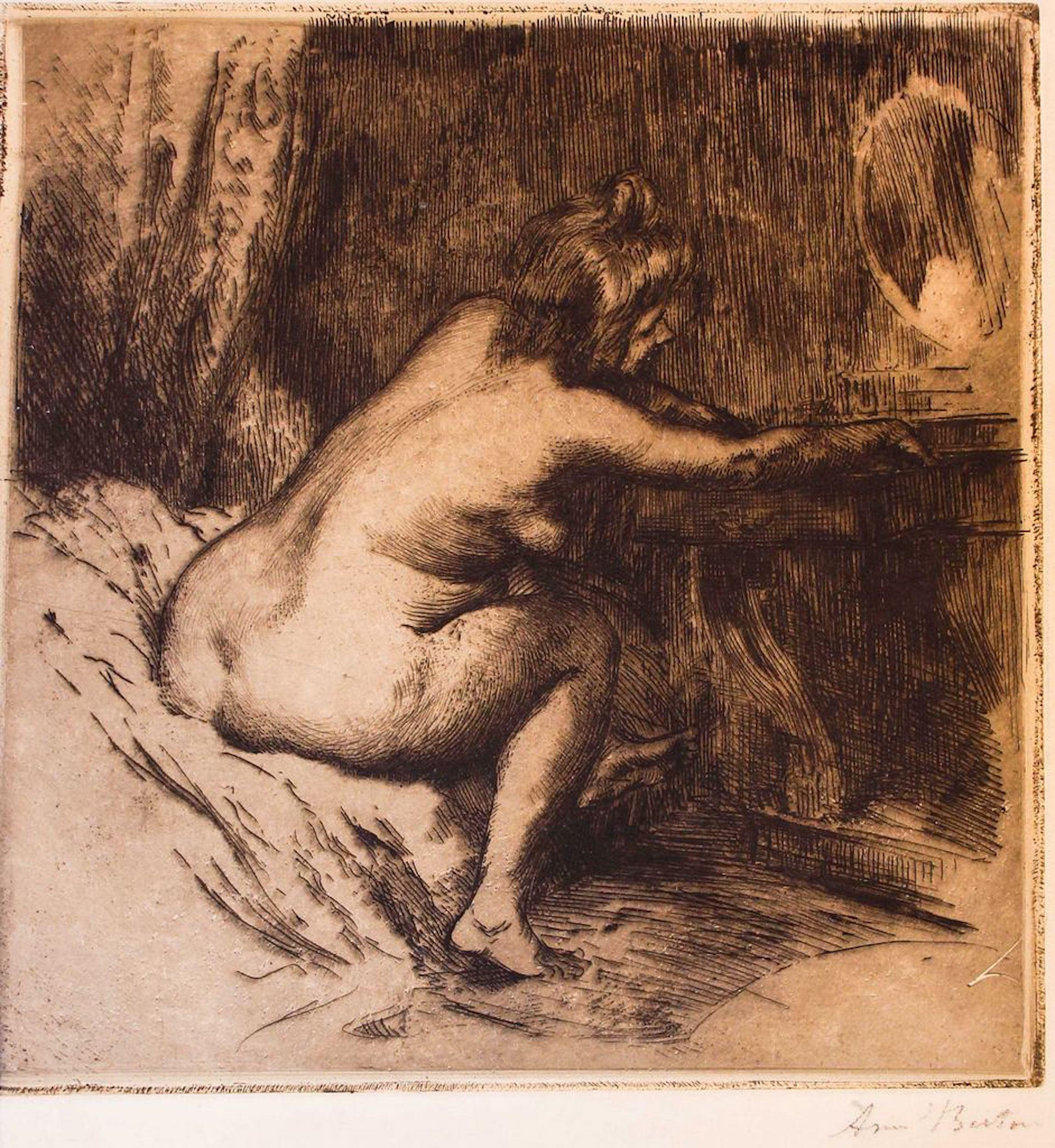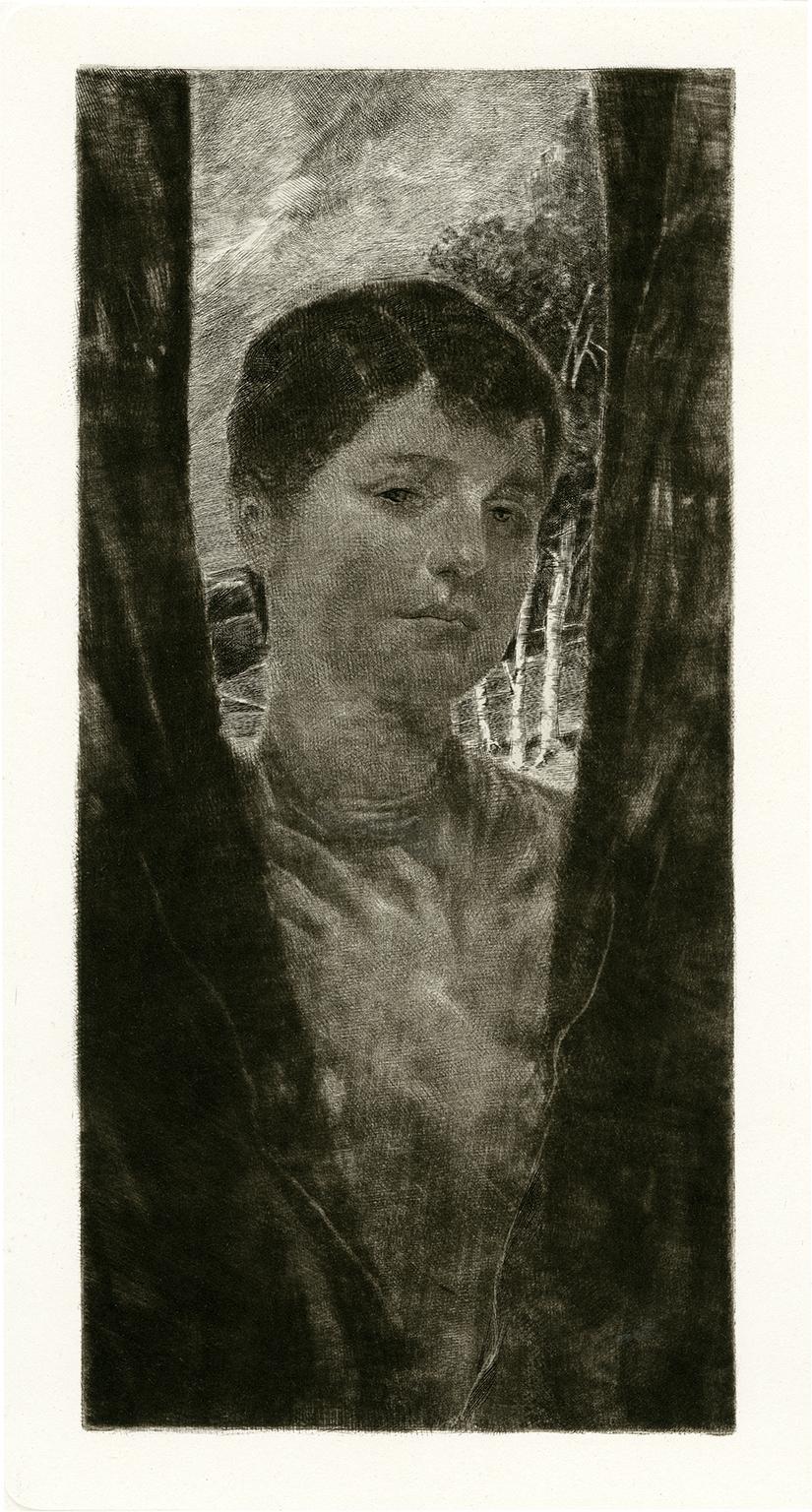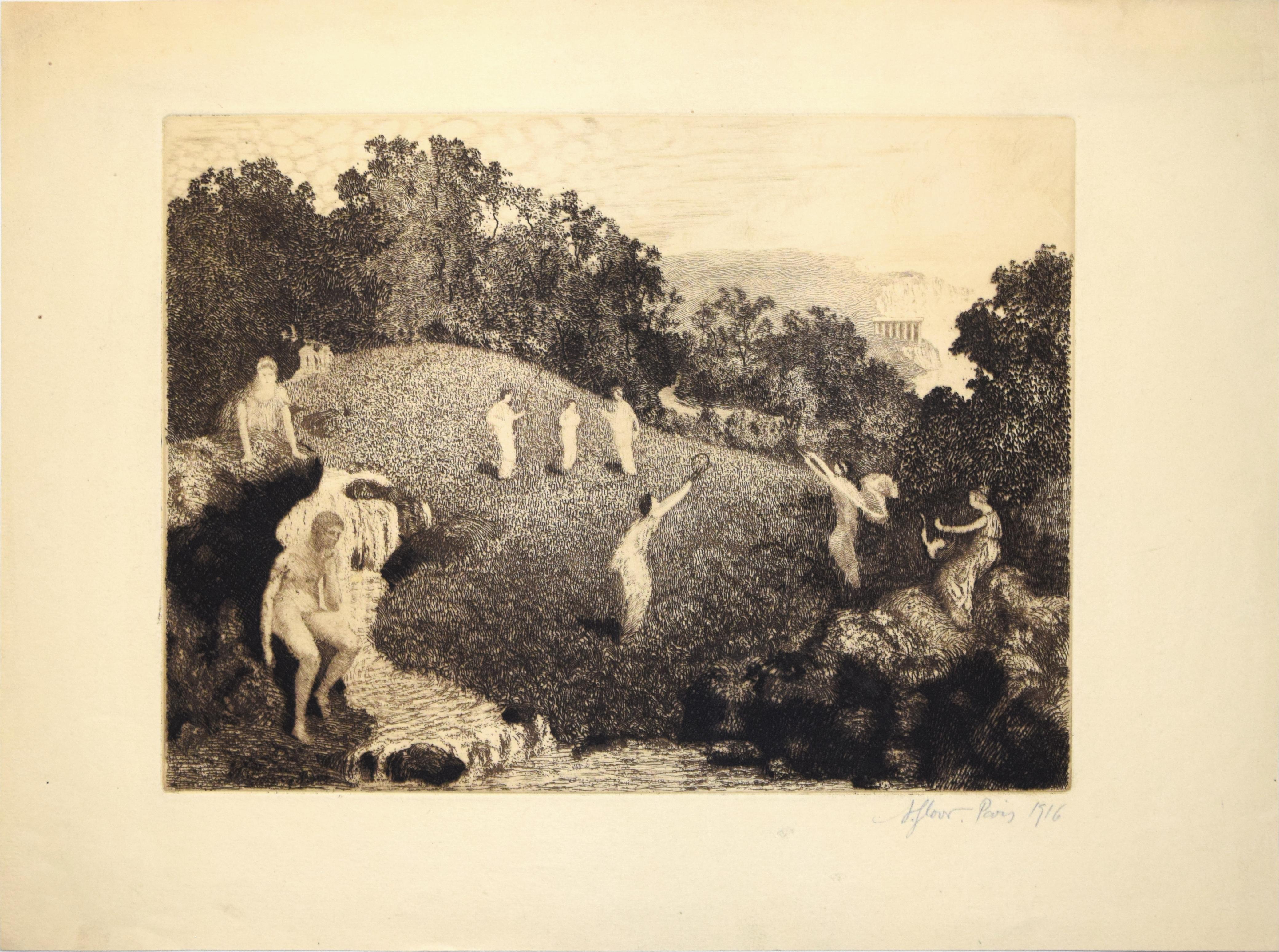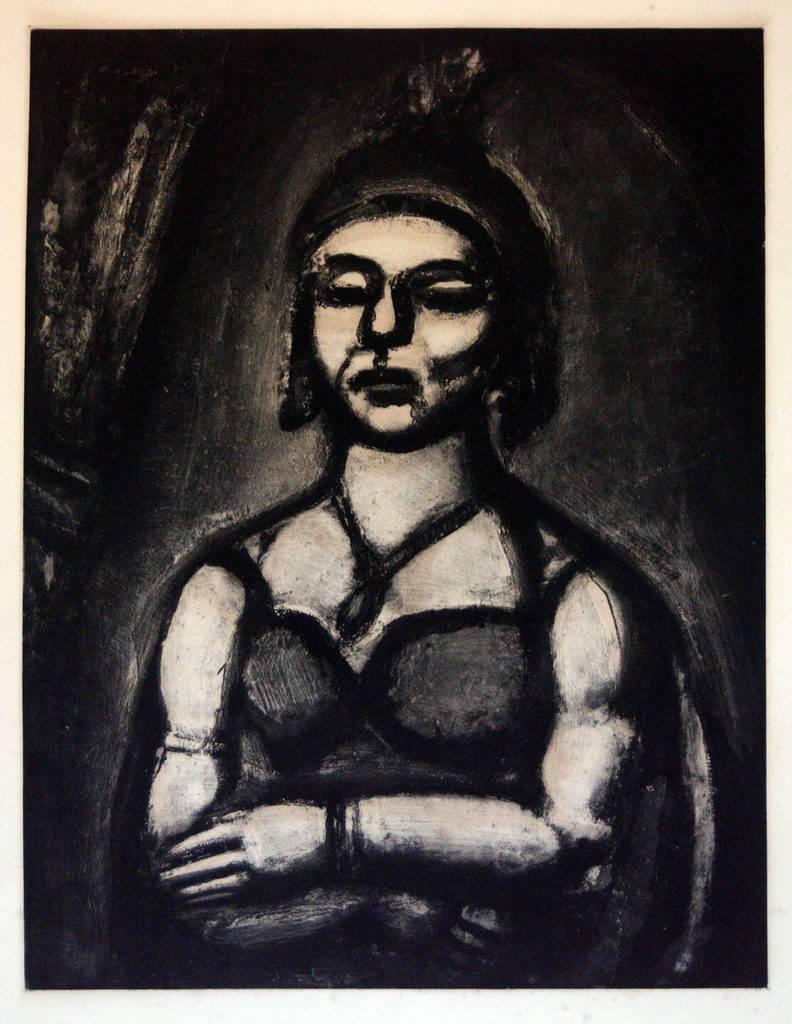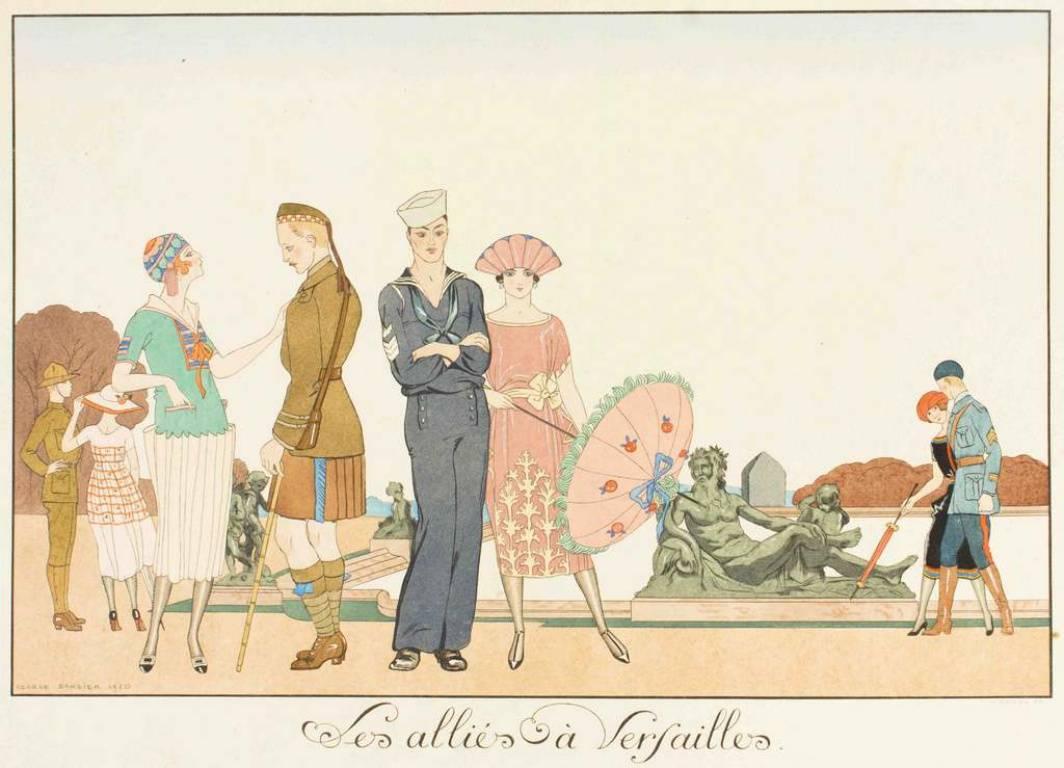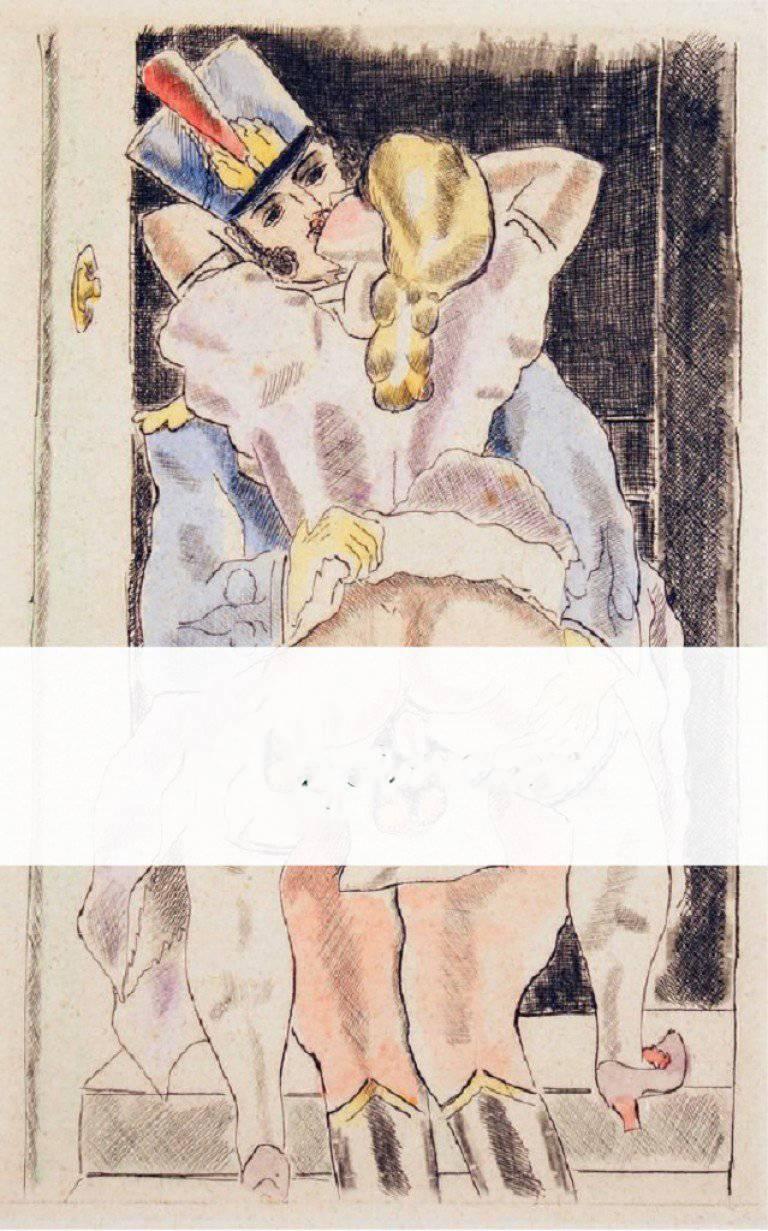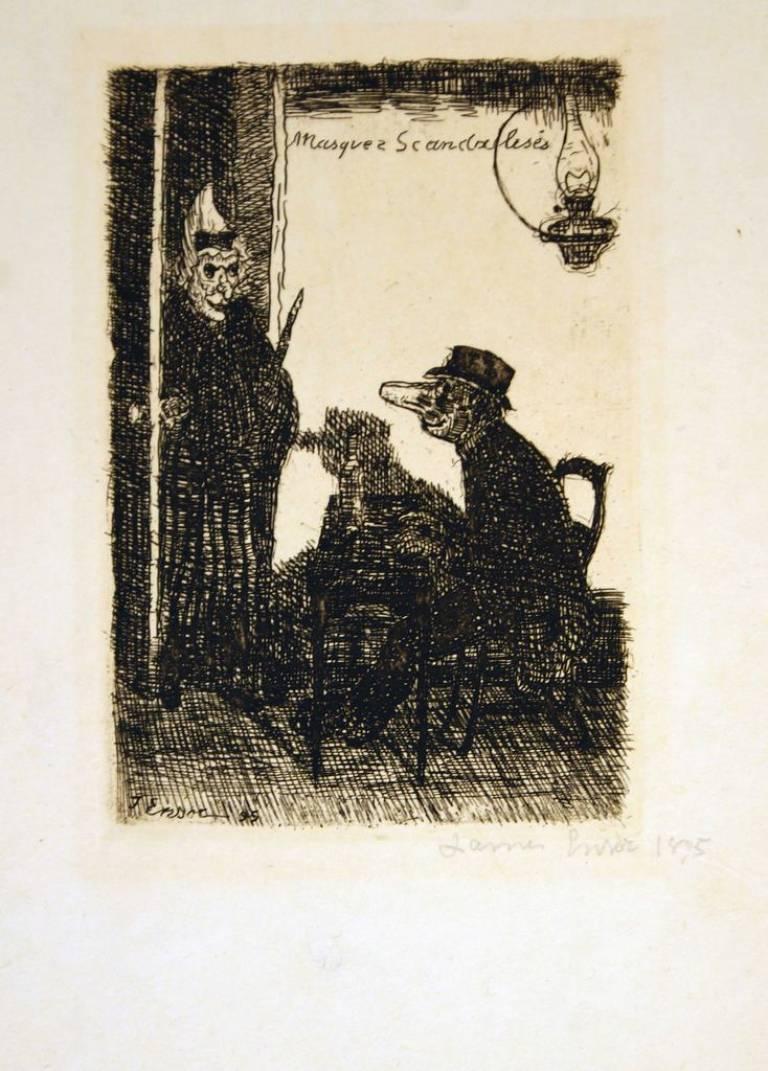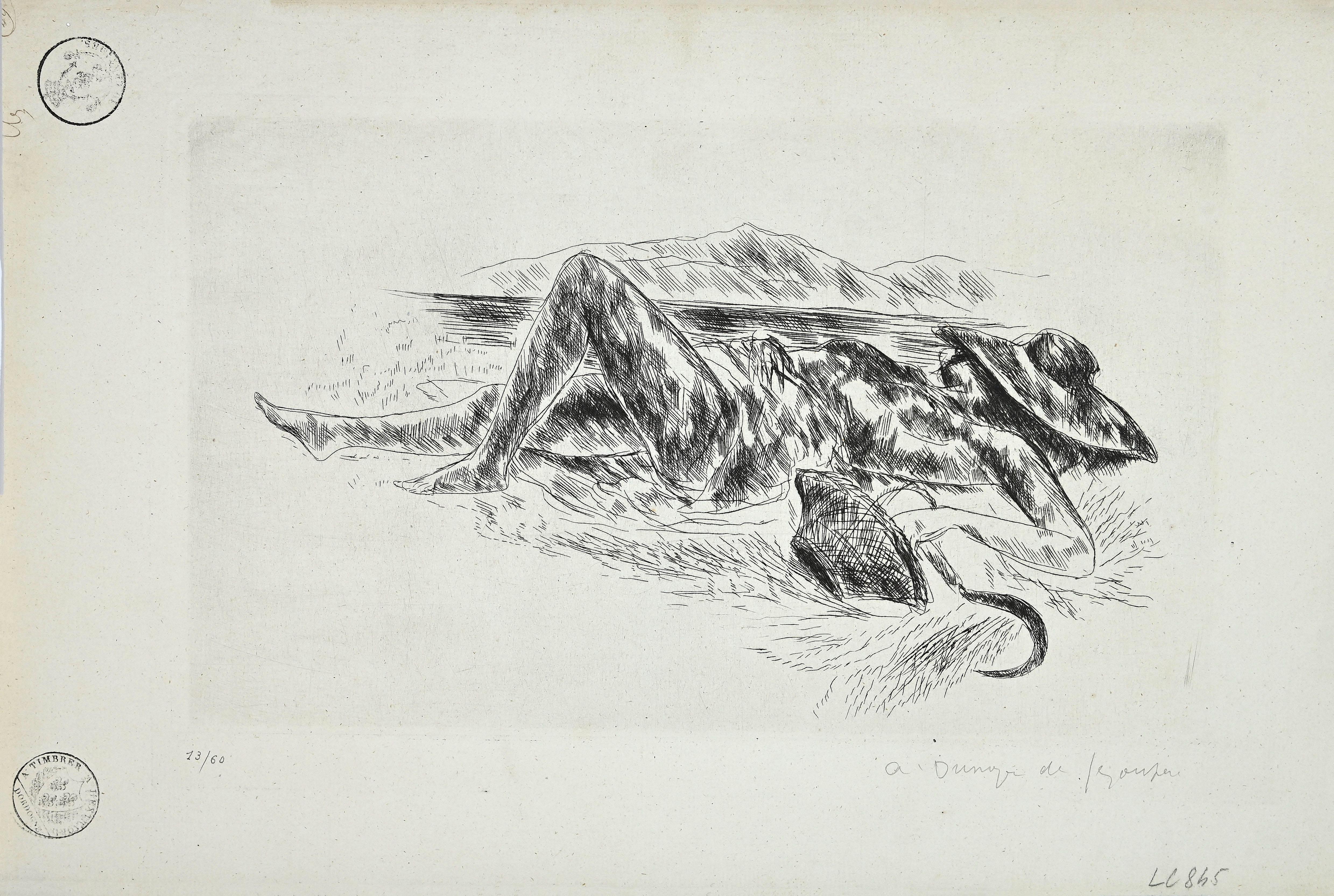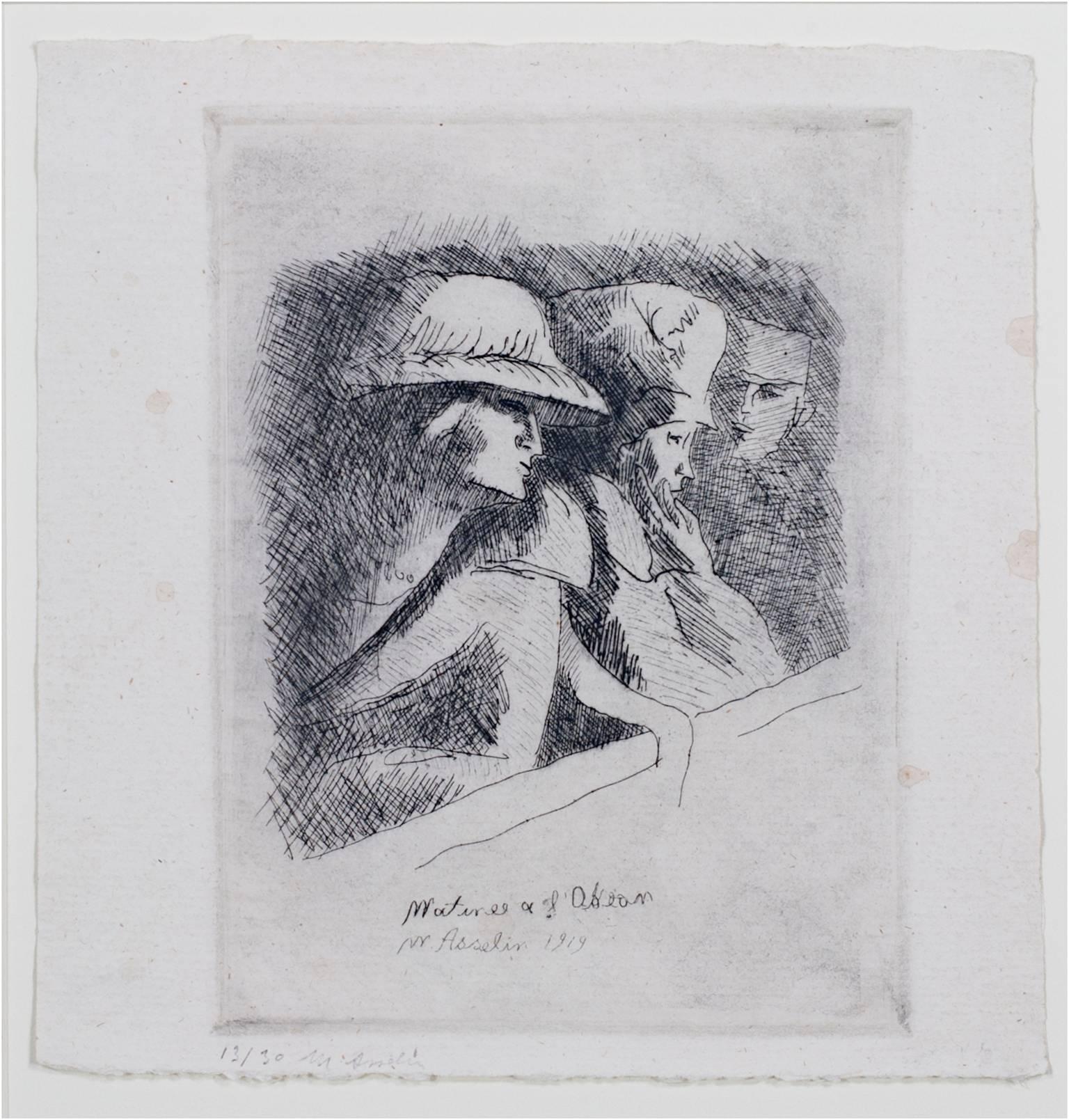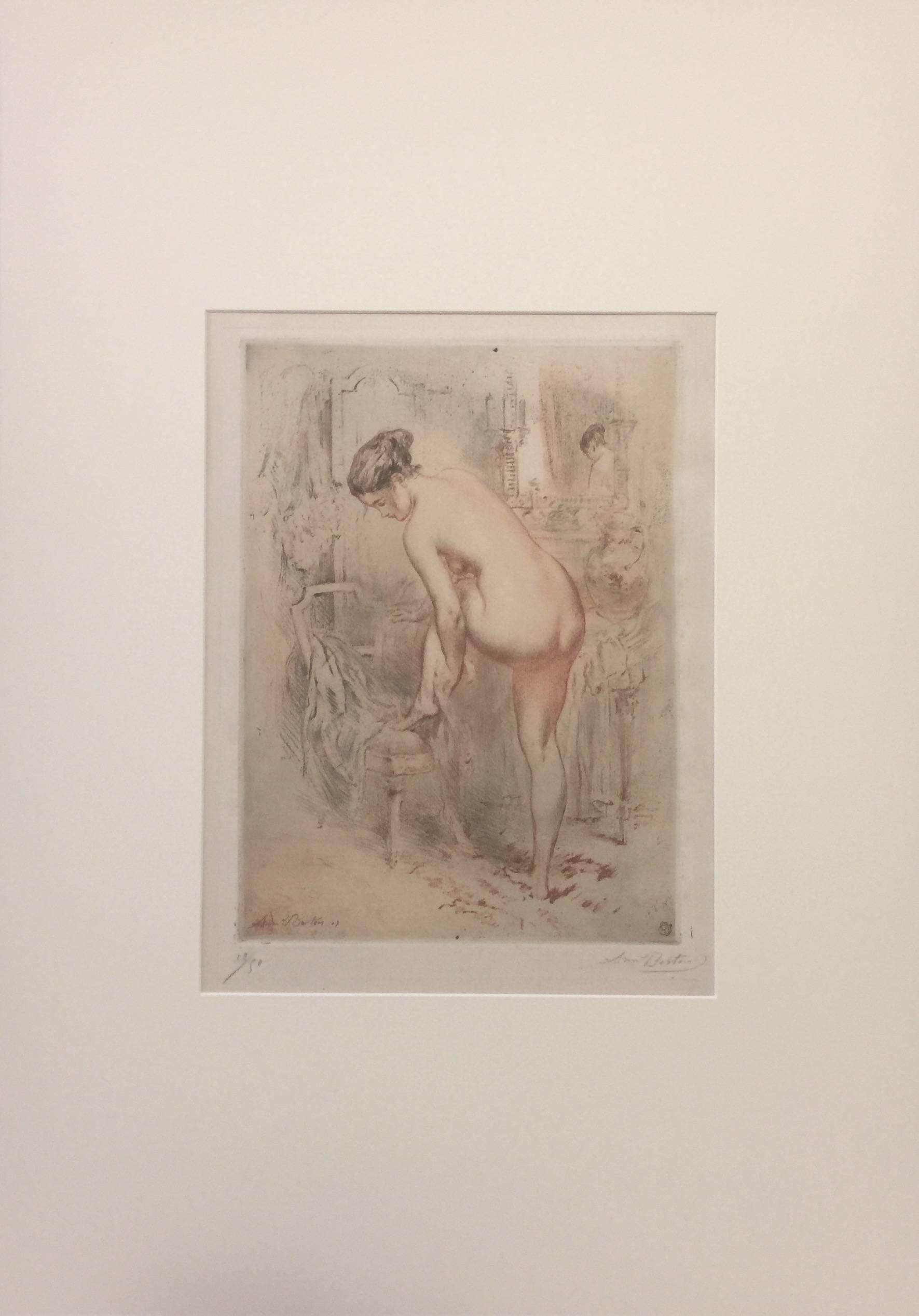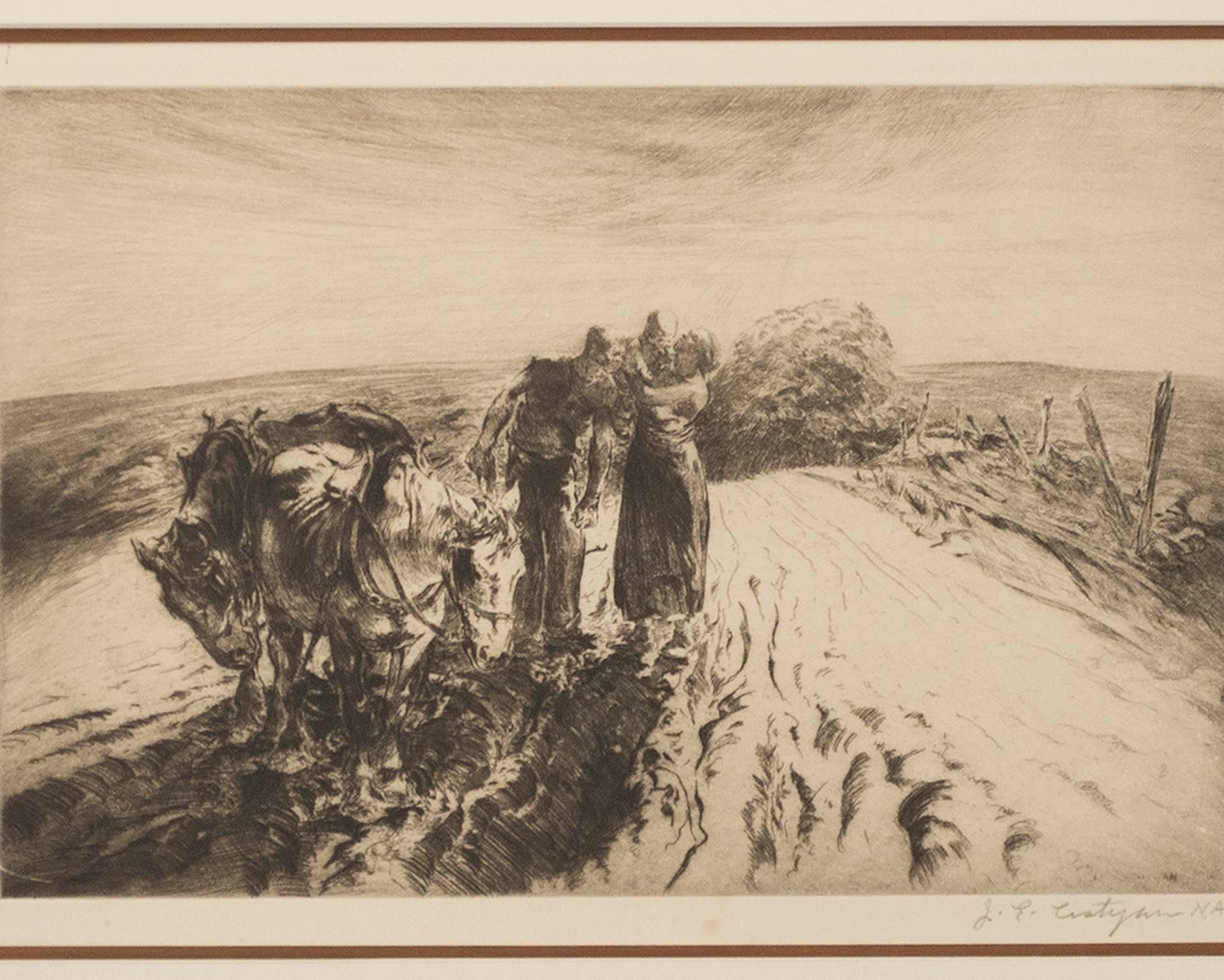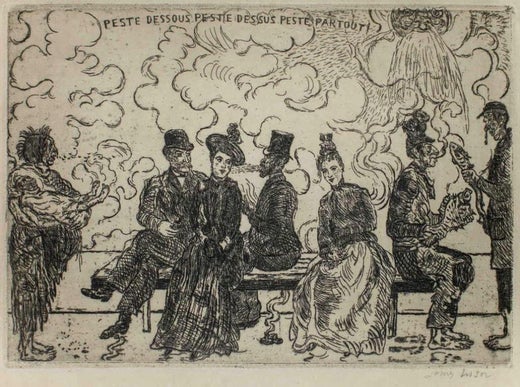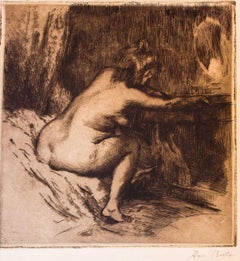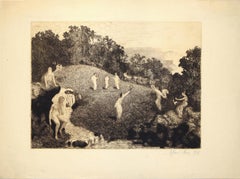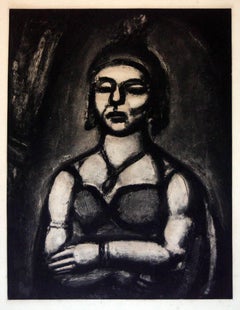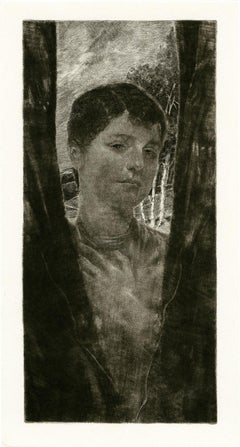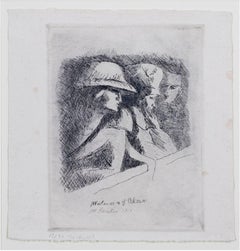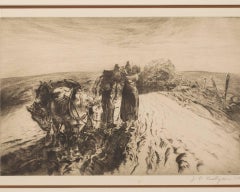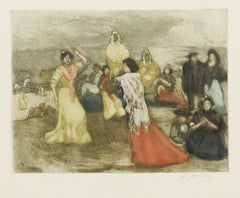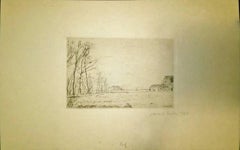
Lisière du Petit Bois, Ostende - Etching by James Ensor
James EnsorLisière du Petit Bois, Ostende - Etching by James Ensor1888
1888
About the Item
- Creator:James Ensor (1860 - 1949, Belgian)
- Creation Year:1888
- Dimensions:Height: 6.3 in (16 cm)Width: 9.85 in (25 cm)Depth: 0.04 in (1 mm)
- Medium:
- Movement & Style:
- Period:
- Framing:Framing Options Available
- Condition:Insurance may be requested by customers as additional service, contact us for more information.
- Gallery Location:Roma, IT
- Reference Number:Seller: J-671931stDibs: LU65032481571
James Ensor
James Ensor is a Belgian painter and printmaker and an important influence on Expressionism and Surrealism. Ensor's early works, such as Russian Music (1881) and The Drunkards (1883), depict realistic scenes in a somber style, after which his palette subsequently brightened and he favored increasingly bizarre subject matter. Such paintings as The Scandalized Masks (1883) and Skeletons Fighting over a Hanged Man (1891) feature figures in grotesque masks inspired by the ones sold in his mother's gift shop for Ostend's annual Carnival. Subjects such as carnivals, masks, puppetry, skeletons and fantastic allegories are dominant in Ensor's mature work. Ensor dressed skeletons up in his studio and arranged them in colorful, enigmatic tableaux on the canvas and used masks as a theatrical aspect in his still lifes. Attracted by masks' plastic forms, bright colors and potential for psychological impact, he created a format in which he could paint with complete freedom. Ensor was a prolific and accomplished printmaker. He created 133 etchings and drypoints throughout his career, with 86 of them made between 1886 and 1891 during the height of Ensor's most creative period. Ensor himself recognized that the prints were a key part of his artistic legacy, stating in a letter to Albert Croquez in 1934, "Yes, I intend to go on working for a long time yet so that generations to come may hear me. I intend to survive, and I think of the solid copper plate, the unalterable ink, easy reproduction, faithful prints and I adopt etching as a means of expression.”
More From This Seller
View All1950s Post-Impressionist Figurative Prints
Etching
1920s Post-Impressionist Figurative Prints
Etching
1910s Post-Impressionist Figurative Prints
Etching
1940s Post-Impressionist Figurative Prints
Etching
1920s Post-Impressionist Figurative Prints
Etching
1920s Post-Impressionist Figurative Prints
Etching
You May Also Like
1890s Post-Impressionist Figurative Prints
Etching, Aquatint
1910s Post-Impressionist Figurative Prints
Etching
1930s Post-Impressionist Figurative Prints
Etching, Aquatint
Early 1900s Post-Impressionist Figurative Prints
Aquatint
1910s Fauvist Figurative Prints
Drypoint, Etching
1990s Post-Impressionist Figurative Prints
Etching
